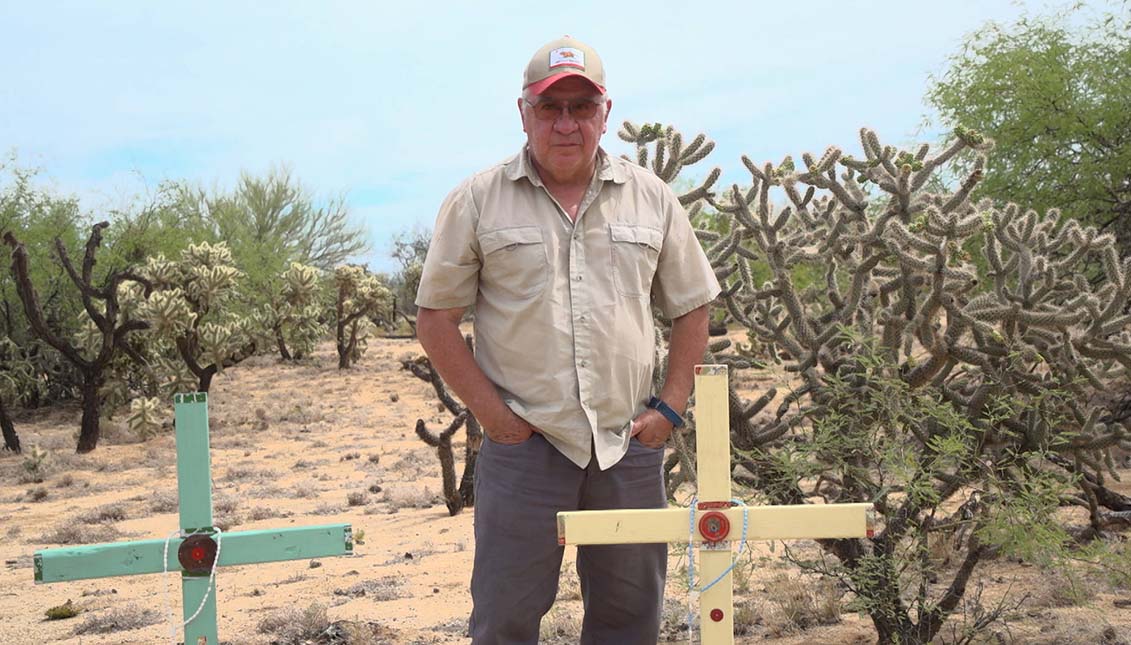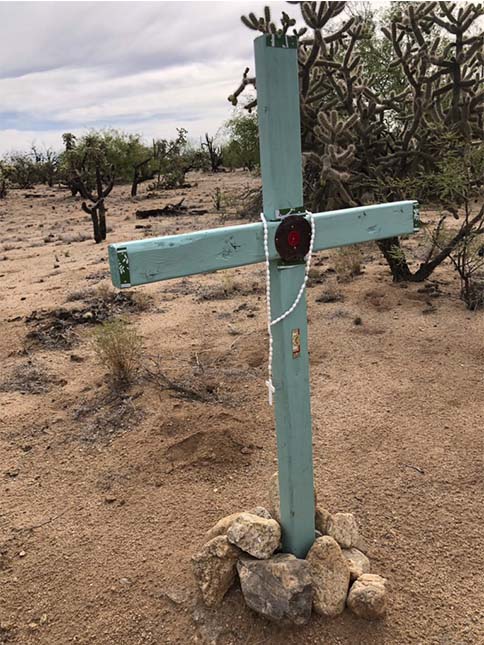
Alvaro Enciso: “Migrants who cross the Arizona desert are my heroes”
There are more than 3.000 corps from people who tried to arrive in the U.S. walking along the desert. This Colombian artist put crosses for them. He tells us…
The Sonora desert is an impressive lovely place. Not many miles from Tucson, Arizona, you are able to find large tracks of land covered by “sahuaros” from up to 15 meters tall. But also there is a hidden secret: the human remains from more than 3.000 migrants who lost their lives in this thirsty land trying to reach a small piece of the American dream. They are my heroes.
My name is Álvaro Enciso. I was born in Colombia and I am an artist. I use to honor the thousands of migrants who disappeared in the desert. How? Putting a cross in the place where they died. There are now over 900.
From six years now, me and my assistant drive carrying crosses, cement, water, and topographic maps, and track migrants until we find their belongings or, sadly, their corps.

Nobody dies from hunger in this desert; they die from thirst.
And the American government knows it. They close the paths near the highways and send these thousands of Mexicans and Central Americans to the farthest places, where they are going to die without any water.
They don’t understand migrants’ despair. Though this is a country made by migrants. Like me.
I arrived in the U.S. in the mid 60s, when I was twenty. I dreamed of a good job and a university career.
I majored in Anthropology and spent a bunch of years in New York, where I worked for the federal government in migrant issues. But one day I got tired of it and I took a leap of faith.
I first moved to New Mexico, and later to Tucson. I wanted to be an artist, and for some years all I was doing was reading. Then I started creating my “mamarrachadas” and, God! It turned out people liked them.
However, I realized that people were dying just a few miles from my house. Boys and girls, too young to die.
I wondered how to reflect their courage and despair. And then I start looking for the places where the tragedy had happened, sit there and tried to figure out what they had felt. In the beginning, I took photographs, but there was no trace of distress or pain.
Until I found these crosses…
RELATED CONTENT

I am not a religious person. I wouldn’t want people to think that my crosses are Christian symbols. They are geometrical figures and marks on a map. Without any ornament, just tins that I found in the desert. That’s all.
I think this personal project is the biggest land art installation in the U.S –there’s above 70.000 km2, a huge distance-, and I do know I am not going to be able to finish it, but it served its purpose in the end. Which one? To close the cycle I started 50 years ago when I arrived in the U.S like these migrants. And, indeed, citizens are being aware of the situation. They asked: ‘Who is this eccentric old man that puts crosses rather than play domino or carts?’ They had to face this human tragedy in their own country.
As I find a place where a migrant died of thirst, anonymously, I take my time to reflect on my own loss; my grandma and parents’ death, my love failures and all that leaves a wound in the soul.
We will always be migrants. That is how this country was born, and what it grieves me is that so many people whose parents or grandparents arrive undocumented from Latin America are so embarrassed by their history.

Today I have to put another cross in the desert. Yes, it was an Indian child who died while her mother was looking for some water. The vultures were flying around the little kid when she came back.
A sad story. A tragedy, as I said. But it is ignored by most people, sometimes because they don’t want to see.
And, meanwhile, the border patrols spot my crosses from their helicopters. And, meanwhile, cowboys who seek their lost cows come across them. And, meanwhile, migrants walk through Arizona desert and die of thirst.











LEAVE A COMMENT:
Join the discussion! Leave a comment.